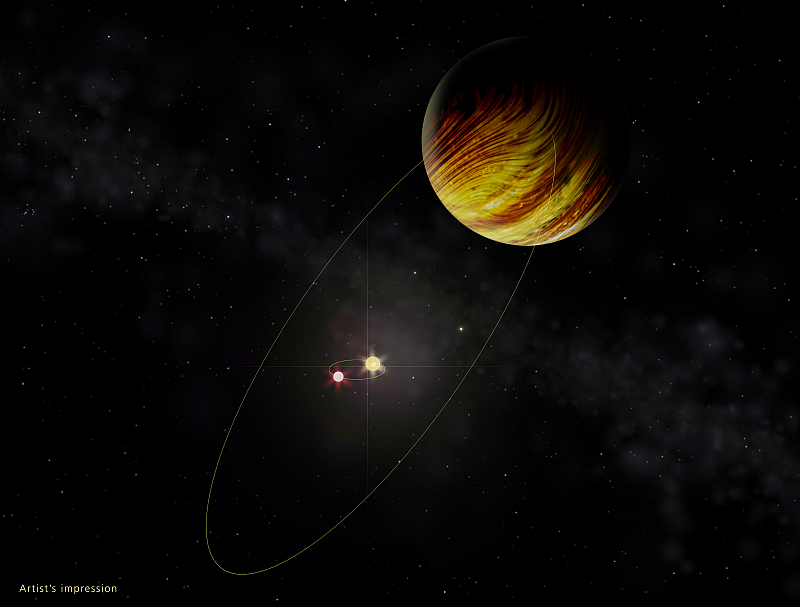- USQ Astronomy PhD student Kelvin Getley has uncovered evidence of a new planet orbiting a binary star
- Exoplanet more reminiscent of Pluto than other planets in our Solar System
- A long time ago in a galaxy far, far away, Luke Skywalker lived on a planet circling twin sun. While Star Wars is science-fiction, two stars in orbit of each other is firmly based in reality.

USQ PhD astronomy student Kelvin Getley, working with an Australian Astronomical Observatory (AAO) astronomer, has uncovered evidence of a new planet orbiting a binary star (two stars that orbit a common centre of mass). Adding interest to this discovery is the observation that the planet orbits the stars on a tilt †an example of the weird and wonderful diversity of the Universe.
The binary star, KIC 5095269, system was first observed by NASA’s Kepler space telescope. The newly-discovered planet has a mass 7.7 times more than Jupiter and orbits the binary star every 237.7 days.
“My PhD research involves performing an eclipse timing variation study of binary stars in order to look for any third bodies that may be present, like stars/brown dwarfs or planets,†Mr Getley, who lead authored the journal article announcing the discovery, said “I created a program that determined when one star passes in front of another as seen from Earth, and compared them to what we’d expect to see if there was nothing else in the system. My PhD supervisors, Professor Brad Carter and Dr Rachel King (USQ), and Simon O’Toole from the AAO, guided and advised me, and helped come up with tests that could be done on the system to try to make sure what we were seeing was possible.â€Â
Supervisor and AAO astronomer Dr O’Toole is an expert in exoplanetary systems. “This is a really neat result,†Dr O’Toole said, “Planets orbiting two stars have been found before, but the cool thing here is that Kelvin has discovered a planet with a tilted orbit, more reminiscent of Pluto than the other planets in our Solar System.”
Professor Carter leads USQ’s Astrophysics Research Program Team and commended Mr Getley on his work and discovery. “Kelvin’s research demonstrates that evidence for new worlds can be gathered through an innovative analysis of the Kepler space telescope’s treasure trove of observational data,” he said.
Mr Getley is studying a PhD in Astronomy and is an external USQ student living in Charlton, Victoria. “Being an astronomer is something that I’ve wanted to be basically my entire life,†he said. “My granddad was interested in astronomy as a hobby so I grew up reading his books. Doing this research, and making a discovery like this is amazing.â€Â
The AAO is a division of the Department of Industry, Innovation and Science. The USQ Astrophysics Group is part of the University’s Computational Engineering and Science Research Centre.
Learn more about studying Astronomy at USQ via www.usq.edu.au/astronomy.
Publication details:
A.K. Getley (University of Southern Queensland), B. Carter (University of Southern Queensland), R. King (University of Southern Queensland) and S. O’Toole (Australian Astronomical Observatory), “Evidence for a planetary mass third body orbiting the binary star KIC 5095269â€Â, Published in Monthly Notices of the Royal Astronomical Society (MNRAS) through Oxford University Press. MNRAS, 2017, 468, 2932
ÂÂ



